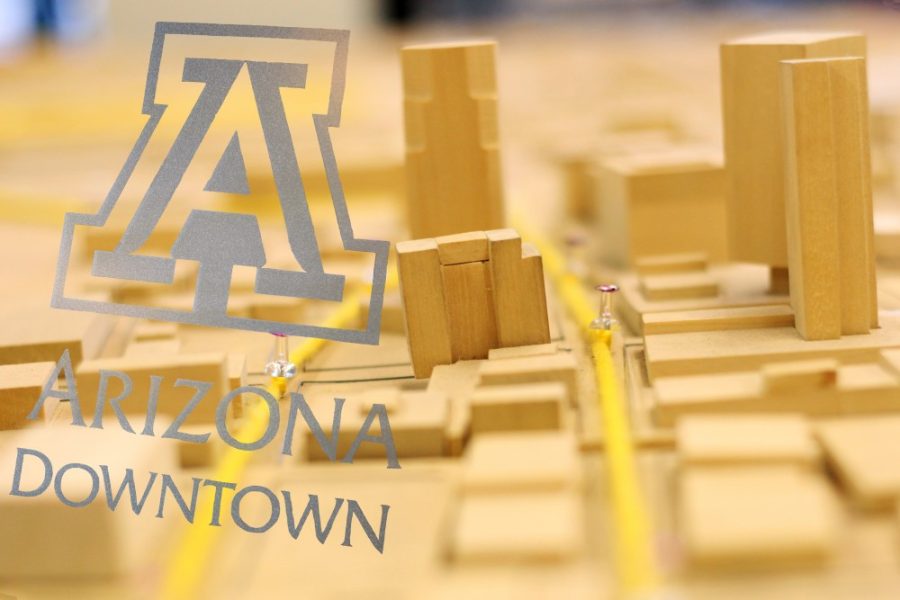A newly proposed center at the UA downtown campus will allow students and community members to collaborate with businesses, nonprofits and the city government.
The Center for Geospatial Innovation, Science and Technology will be a space where students can work on projects that can be used to address the city’s needs, network with potential employers and find internships, said Chris Lukinbeal, director of the Geographic Information Systems
Technology masters and certificate programs.
The center, which will be located on the second floor of the Roy Place building on the corner of Stone Avenue and Pennington Street, will be dedicated to research and providing services to the community. The projects will be related to the GIST field, which includes computer mapping and location-based technology, Lukinbeal said.
“It was really important for us to be seen as part of that [geospatial] community,” Lukinbeal said, “rather than being situated just on main campus.”
The proposal calls for a collaboration between academic units, such as the College of Social and Behavioral Sciences and the Institute of the Environment, to take care of start-up costs, Lukinbeal added. The projects conducted at the center will provide funding once they get started.
The center is still awaiting approval from the Provost’s Office and there’s no set opening date, Lukinbeal said. The approval process is usually a smooth one, said Provost Andrew Comrie, adding that he doesn’t anticipate any issues.
Proposals are typically reviewed and go back and forth between the Provost’s Office and the college proposing the center. While approval is pending, the Provost’s staff asks questions and clarifies the plan before approving it.
Adding a center to the downtown campus to address community needs, Comrie said, will further the UA’s initiative to establish its presence in downtown,.
“Initiatives altogether that help us establish that downtown presence better and do a good job for students … generally those are a good thing,” he added.
Lydia Breunig, director of community outreach and special projects for the College of Social and Behavioral Sciences, said the center will help the UA reach its goal of 100 percent student engagement. This is one of President Ann Weaver Hart’s main goals in her Never Settle Strategic Academic and Business Plan.
“It helps us achieve so many goals that the university has set out in terms of advancing the work that the university does: student education through engaged learning, providing information and resources to our community and providing continuing education for the general public,” Breunig said.
Because most geospatial technology work in Tucson is done downtown through government agencies like the Pima Association of Governments and the City of Tucson, having these projects and internship programs downtown will help the university and community move forward, Lukinbeal said. The college is also hoping to open a center in Maricopa County in order to make connections and collaborate with the geospatial community statewide.
“It’s a way to look for new opportunities and innovations,” Lukinbeal said, “ways that we can move forward together with the community while being in the community as well.”









